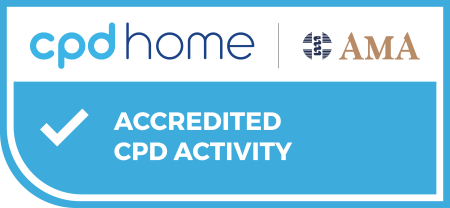Finding accredited CPD
The Introduction to Dermatopathology Correlation Cases course provides healthcare professionals with a systematic approach to correlating dermoscopic and histopathological findings for skin lesions. This two-unit program emphasises evidence-based practices and real-world applications to enhance diagnostic precision.
Unit 1: Introduction to Dermatopathology
This unit lays the groundwork for understanding dermatopathology by comparing dermatoscopic and histological methodologies. Participants will gain insights into the principles and processes involved in analysing skin samples. Key topics include:
Unit 2: Correlation Cases and Practical Applications
Building on the foundational knowledge, this unit focuses on real-world case studies to illustrate the application of dermatoscopic and histological correlations. Key topics include:
This unit incorporates interactive discussions and guided analyses to strengthen participants' diagnostic skills.
By the end of the course, participants will have developed a deeper understanding of the relationship between clinical and histopathological findings, empowering them to make more informed decisions in the diagnosis and management of dermatological conditions.
Cost: $195
Suitable for: All degree qualified medical practitioners.
Study mode: 100% online
Disclaimer: Please note, once you click 'Register now' you will be leaving the AMA’s CPD Home website and entering a third-party education provider’s website. If you choose to register for this learning, you will need to provide some of your personal information directly to the third-party education provider. If you have any queries about how third-party education providers use, disclose or store your personal information you should consult their privacy policy.
Upon completion, your CPD activity record may take up to 4 weeks to be reflected on your CPD Home Dashboard.
You have to log in to see the content of this module.
Provided by
Accredited by

*Medical Board of Australia’s (MBA)’s revised Registration Standard: Continuing professional development (the Standard)